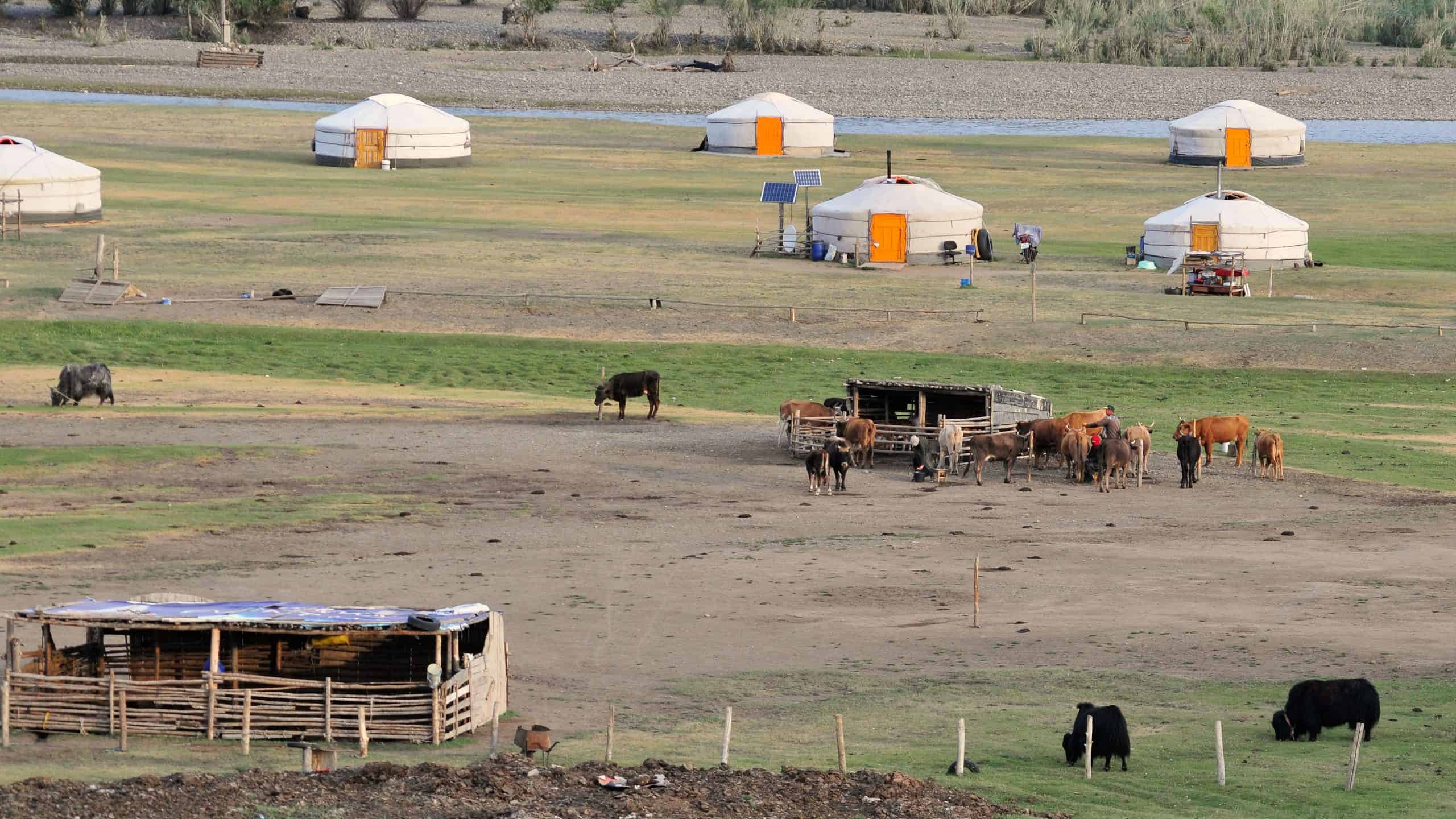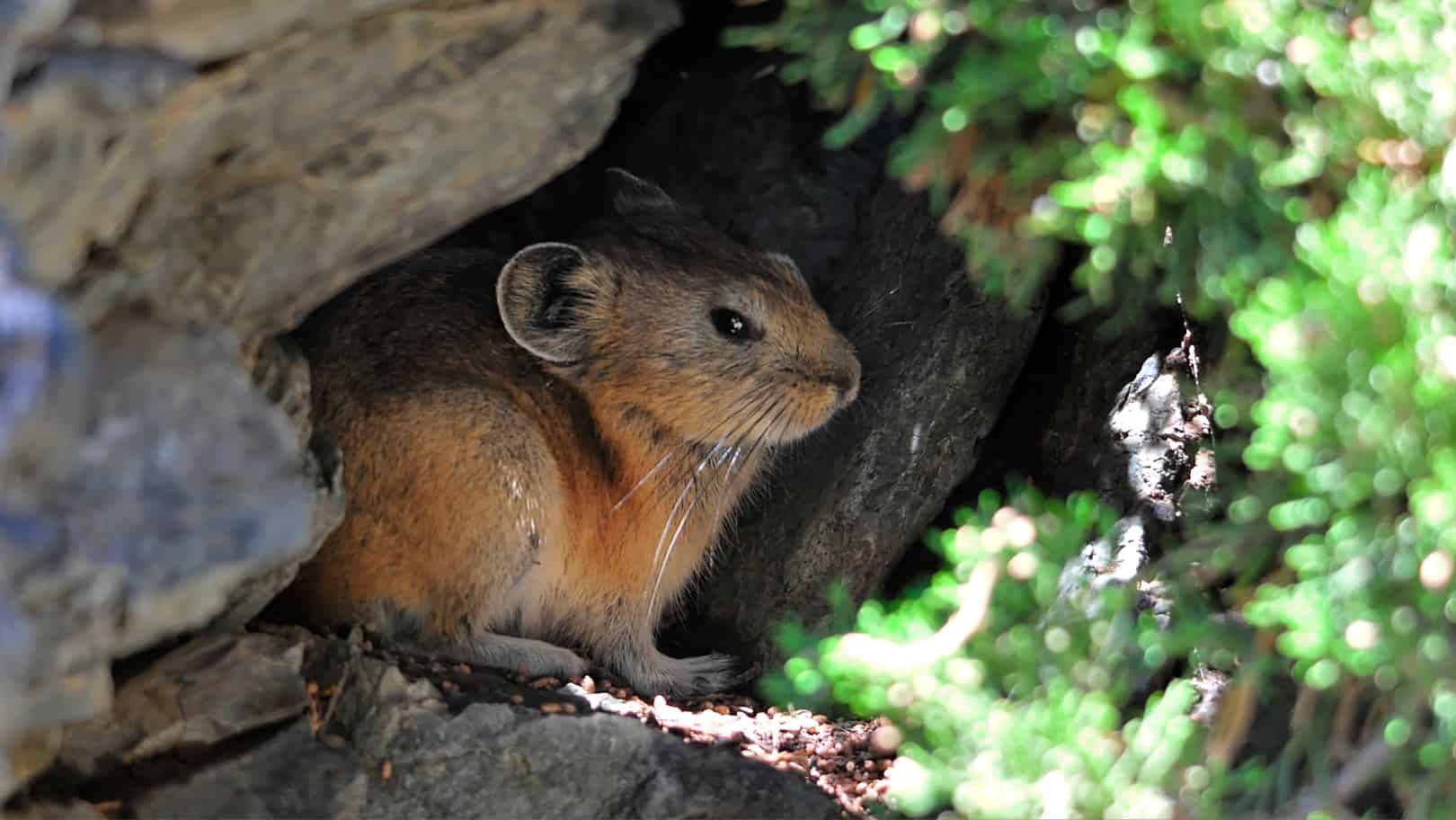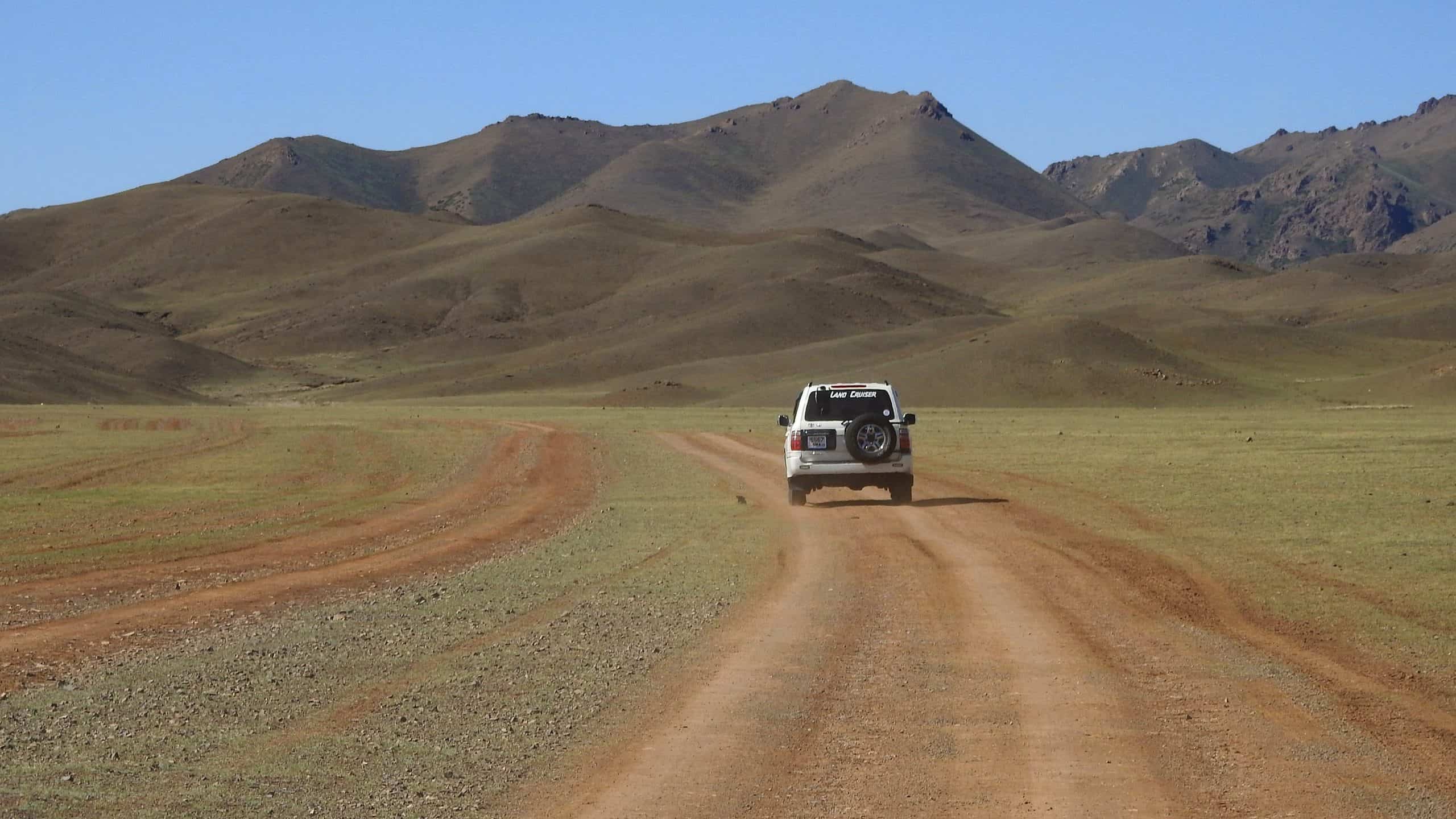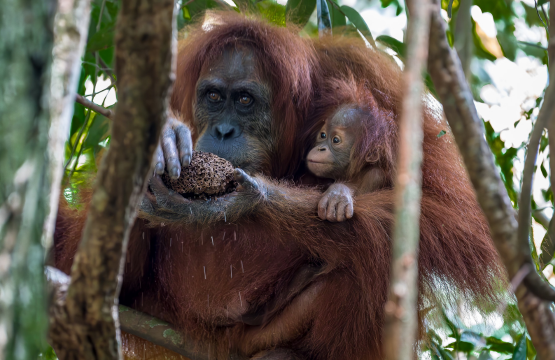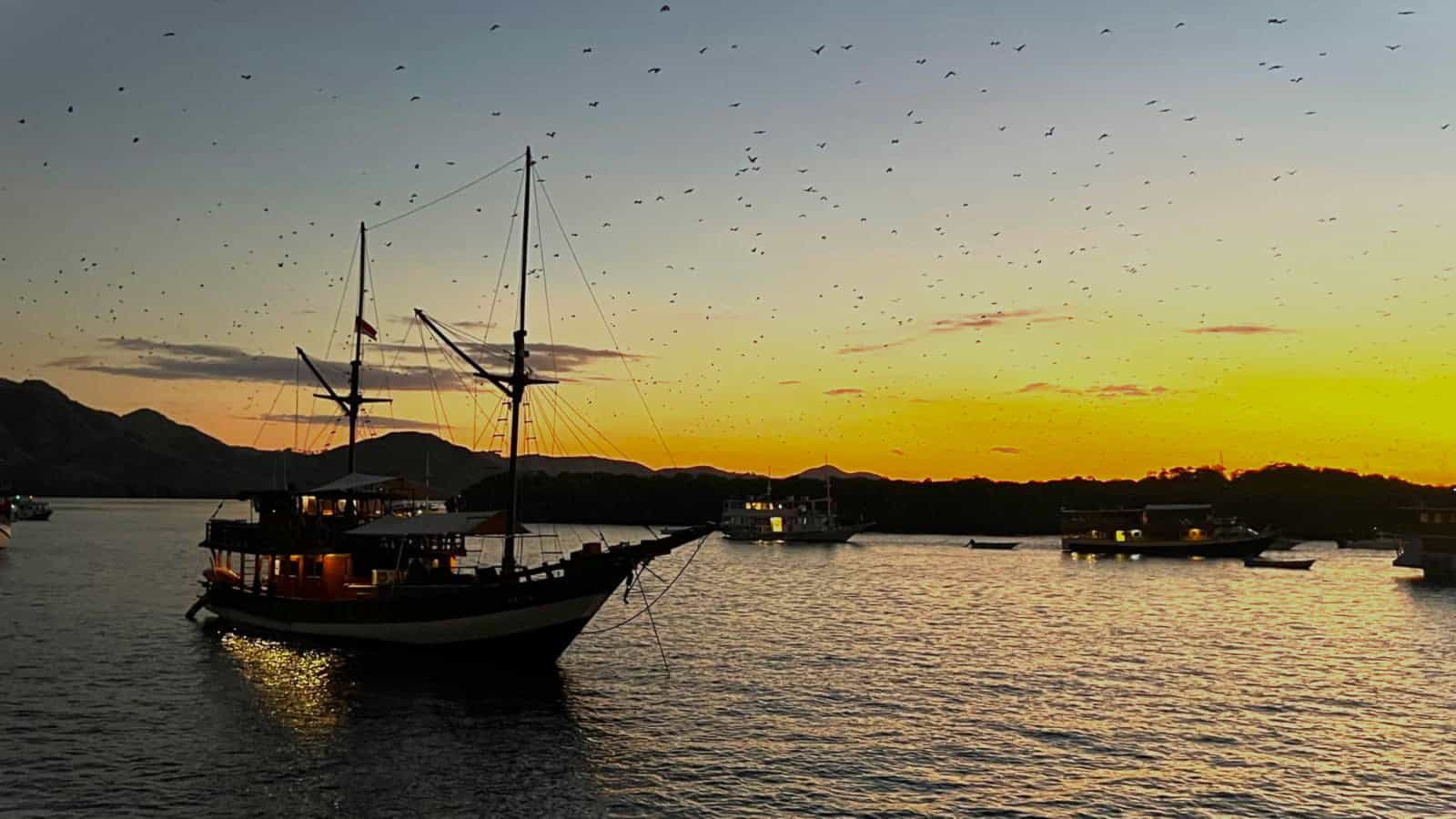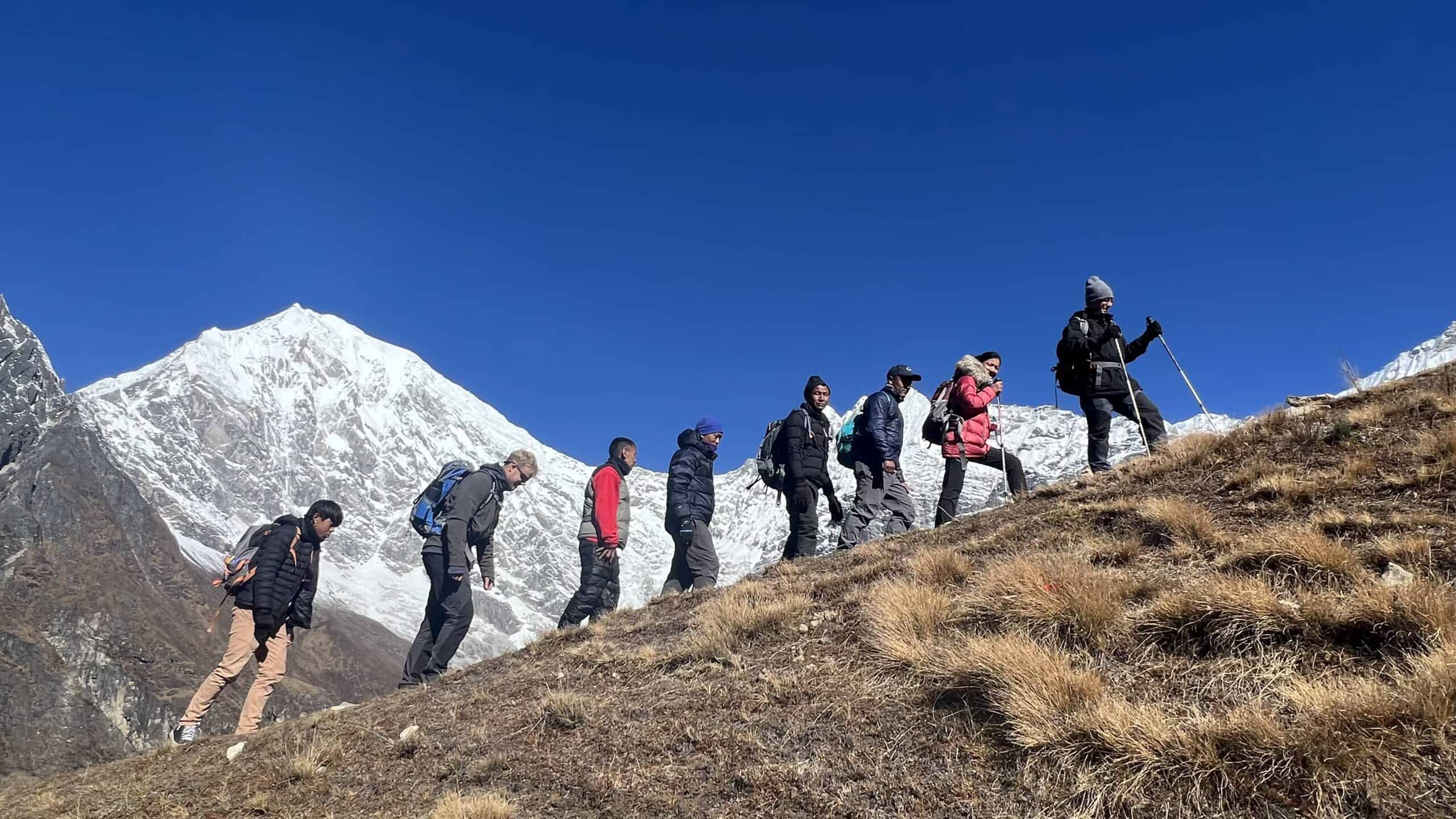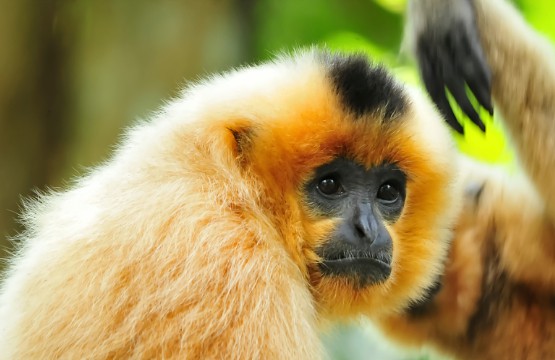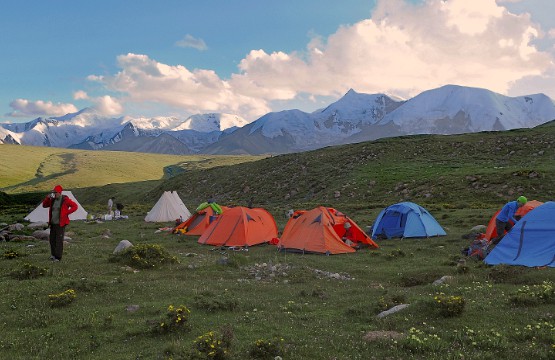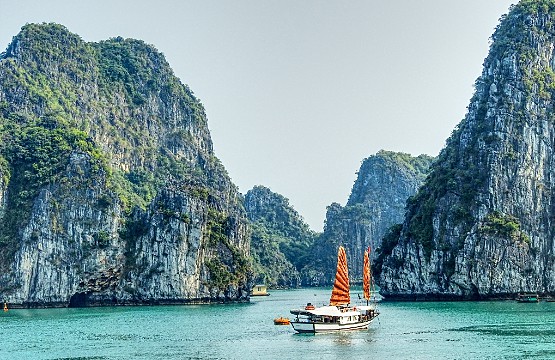Wild Mongolia: Wildlife Adventure
This tour combines the highlights of Mongolia – from the busy capital Ulaanbaatar to the Gobi Desert and the land of Orkhon Valley in Uvurkhangai. Ugii Nuur, the Ramsar Site of International Importance is a fresh water lake in eastern Arkhangai and Uvurkhangai provinces are located in the center region... More
This tour combines the highlights of Mongolia – from the busy capital Ulaanbaatar to the Gobi Desert and the land of Orkhon Valley in Uvurkhangai. Ugii Nuur, the Ramsar Site of International Importance is a fresh water lake in eastern Arkhangai and Uvurkhangai provinces are located in the center region of Mongolia. Elsen Tasarkhai is an unique sight to see, a desert surrounded with mountainous area. The Uvurkhangai Province includes World Heritage Centre of the Orkhon Valley and numerous archaeological remains of the nomads. And the Kharkhorin, the site of the ancient capital city of Chinggis Khan – Kharkhorin – the center of the largest Empire the World has ever known.
LessHighlights
- Stunningly varied landscape including open Steppe, the rolling sandunes in Gobi desert, scenic mountains
- Explore the Ugii Nuur, the Ramsar Site of International Importance
- Karakorum, the ancient capital of the Mongol Empire
- Many birding highlights with rare and endemic species
- Stay in wonderfully scenic comfortable ‘ger’ camps
- Przewalski’s Horse, Siberian Ibex & Argali Sheep among the mammal highlights
- Explore Terelj National park
- Khustai National Park
- Discover Gobi Desert and its beauties
- Experience nomadic lifestyle, one of the last remaining nomadic cultures in the world
- 4wheel drive vehicles to access the more challenging areas.
Welcome to Mongolia! Upon arrival in Ulaanbaatar (also known as ‘UB’) a travel-to-nature Asia guide/representative will be at the airport to greet and take us to our hotel. Please look out for your name-card once you exit out of arrival area. We will base ourselves here for the first night.
Lying at an elevation of 1,300 metres, the capital city of Ulaanbaatar is the biggest settlement in the country, with a population of over 1.3 million, almost half of Mongolia’s entire population live in Ulaanbaatar!
We have time this afternoon to enjoy some introductory city walking through Genghis Khaan Square, Sukhbaatar Square, the National Historical Museum. We’ll no doubt be a little fatigued today, but for those who wish there will be an opportunity for our first nature walk or birding excursion this afternoon on the outskirts of the city around the Tuul River, and its associated wetlands and surrounding stunted willow habitat can be productive. Here we often encounter some exotic avian delights such as White-crowned Penduline Tit, Azure Tit, White-cheeked Starling, Yellow-breasted Bunting and Long-tailed Rose-finch, some water birds. This evening we will have dinner in a traditional Mongolian restaurant offering delicious local and regional cuisine hosted by travel-to- nature partners.
Accommodation: Bayangol Hotel
Meal: Dinner
Today, we’ll drive north eastwards for a few hours, to the Terelj National Park, where we spend two night. En route we visit the giant Genghis Khan statue at Tsongjing Boldog.
Afternoon we go out for our first excursion to Terelj national park. This Park is the most popular destination and the third biggest protected area in Mongolia . The mountain forest here is a protected area, sheltering bears, musk deer, elk, wolves, foxes and badgers. We can take leisurely strolls on meadows carpeted with edelweiss and a dazzling variety of other wild flowers, view fascinating rock formations against a backdrop of pine covered mountains and wander along the wooded banks of a mountain stream and one of the most beautiful places in Mongolia .
For those who are expecting birding highlights today might include such sought-after birds as Siberian Rubythroat, Chinese Bush Warbler, Oriental Cuckoo, Pine Bunting, Orange-flanked Bush Robin, Taiga Flycatcher, Long-tailed Rosefinch and Red-throated Thrush to name but a few. Although mammals are tricky in this dense forest we might be rewarded with views of Siberian Chipmunk and Daurian Pika.
Tonight will be our first night staying in ‘gers’ (or yurt), traditional Mongolian felt tents. Each ‘ger’ generally consists of twin beds with a central heating unit.
Accommodation: Ger Camp
Meal: Breakfast, Lunch, Dinner
There will be 3-4 hours hiking excursion today (ca. 3-4km). However, there will be an alternative more relaxed option for those not wishing to make the hike.
Our day starts with a short drive to visit the Aryabala Meditation Temple located on a steep hill. The main temple is dedicated to Kalachakra philosophy, ”wheel of time”. The temple contains a thangka representing the myth of the Shambhala (a thangka is a painting on cotton or silk; Shambhala is, according to Buddhist philosophy, a fabulous place hidden somewhere in Asia), a Kalachakra mandala, and other objects bound to this belief. On the ground floor of this building, we can admire a ”gallery of Buddhist philosophy”, with 220 original paintings of the artist Bayantsagaan representing the different belief and Buddhist philosophy.
Aryabala Meditation Temple offers with great views out over the Terelj National Park. This is also a vantage point to spot Cinereous Vulture nest on the rocky slope. The park vegetation is dominated by Boreal or Taiga Forest, consist predominantly of larch, pine and birch woodland. We will hike around and explore Larch covered hillsides home to a variety of bird species including Northern Goshawk, Black Grouse, Siberian Rubythroat, Red-throated Thrush, Common and Oriental Cuckoos, Yellow-breasted and Black-faced Bunting, Grey-headed, White-backed, Lesser spotted and Black Woodpeckers, Eurasian Wryneck, Azure and Willow Tits, Dusky, Pallas’s, Yellow-browed and Two-barred Greenish Warblers and the attractive Long-tailed Rosefinch. If luck favors we might encounter the Black-billed Capercaillie in the forest slope.
Accommodation: Ger Camp
Meal: Breakfast, Lunch, Dinner
Our aim today is to reach the Mongolia’s most iconic of habitats – the vast open grassy steppe! Rising early we will bid farewell to the scenic Boreal Forests of Terelj National Park and start making our way westwards towards Karakorum, making a detour to the Khustain Nuruu National Park (HNP). Frequent stops will also allow us to familiarise ourselves with various birds of the grassy steppe such as Asian or Lesser Short-toed Lark, Greater Short-toed Lark, Mongolian Lark, and perhaps even Pere David’s Snowfinch. We also will keep a lookout for exciting raptors such as Steppe Eagle, Upland Buzzard and Saker Falcon.
We should reach in time for lunch, and we will have time to settle into our ‘ger’ camp. Following lunch, we will start exploring the upland steppe habitat of Hustai National Park. One of the principal attractions of the reserve is a population of highly endangered Przewalski’s Horse, the world’s only true horse species. We will look to visit a small spring where they are known to drink in the late afternoon. At one time they were totally extinct in the wild, but thankfully a dedicated team were able to reintroduce them and Khustai is now one of the few strongholds for this impressive inhabitant of these beautiful upland slopes. Late in the afternoon we will return back to our camp for overnight.
“The Mongolian Government declared Hustai National Park as a Specially Protected Area in 1993, one year after the initiation of the reintroduction project of the Takhi (Przewalski’s horse ) to the Hustain Nuruu. The HNP extends through the Khentii Mountains and includes the western edge of the Mongolian steppe at the boundaries of Altanbulag , Argalant and Bayankhangai Soums of Töv Province.
Khustai national park is home to 459 species of vascular plants , 85 species of lichens , 90 species of moss and 33 species of mushrooms . 44 species of mammals have been recorded, including red deer , Mongolian gazelle , roe deer , wild boar , wild sheep , ibex , Mongolian marmots , grey wolves , Eurasian lynx , Pallas cat , red fox , corsac fox and Eurasian badger . The 217 species of birds include golden eagle , lammergeier , great bustard , whooper swan , black stork , Daurian partridge and little owl . There are 16 species of fish , 2 species of amphibians ,and 385 species of insects (including 21 species of ants , 55 species of butterflies , 10 species of bush crickets and 29 species of grasshoppers ). A new species of soil insect has been found inthe Hustai and given the scientific name of Epidamaeus khustaiensis.In 2002, the Man and the Biosphere Reserves organization of UNESCO certified the HNP as a member of the world biosphere network of natural reserves. The HNPT was enrolled as a member of IUCN in 2007.”
Accommodation: Ger Camp
Meal: Breakfast, Lunch, Dinner
We will pack our breakfast and start early today to explore different parts of the park. HNP covers an area of over 50,000 hectares and was designated as a Special Protection Area (SPA) in 1993. Comprised of gently rolling hills, open grasslands and areas of scrub, we have an excellent chance of encountering the world’s only true horse species alongside a range of other mammals, birds and invertebrates.
We explore the area by 4wheel drive and hike up to the slopes and around looking for wildlife and some breeding nest of Amur Falcons in between. We are likely to encounter Long-tailed Sousliks scurrying amongst the vegetation, whilst the early mornings and late afternoons offer a further chance of Grey Wolves, with at least two to three packs resident in the area. With constant scanning and a little luck, we may find them hunting one of the many marmots to be found in the area or even an unsuspecting Red Deer on rocky slpoes.
The valleys are full of wild flowers and butterflies, and the rocky areas are home to Pied Wheatear, Meadow Bunting and Siberian Lesser Whitethroat. The Elm trees along the valleys hold a small population of the elegant Amur Falcon, whilst Lesser Kestrels hunt on the hillsides and Golden Eagles patrol the skies. Some spots are particularly productive for Daurian Partridge. This is also our chance to see Mongolian Gazelle. We shall drive a few kilometres away from the central part of the national park to find them in the lowlands. Should time permit we try to reach the meandering Tuul River, where we will hopefully find Azure Tit in the riparian woods. On our way towards the river we will also stop to search for the large Mongolian Lark.
Having enjoyed this picturesque location we will drive west towards Ugii Lake. At about half way we will make an stop Bayan Nuur, another smaller steppe lake which attracts exciting birdlife, as well as being an important water hole for the local Mongolian cattle herders and their flocks. Birding around the marshland with reeds could be productive to see rare species such as the elegant White-naped Crane, Demoiselle Crane, Falcated Duck, Spot-billed Duck, Oriental Reed Warbler, Pallas’s Grasshopper Warbler, Eastern Marsh Harrier and Pallas’s Reed Bunting. The western side of the lake has far less vegetation and here we hope to enjoy the sight and sound of hundreds of Bar-headed and Swan Goose with grazing horses on the backgroud. Here too can sometimes be found White-winged Black Terns as they perform their dancing flight above the lake margins.
After that birding stop we will continue further to Ugii Lake, most likely arriving late in the afternoon. Upon arrival we can settle into our scenically located ger or yurt camp where we will spend the next two nights.
Accommodation: Ger Camp
Meal: Breakfast, Lunch, Dinner
Ugii Lake is a freshwater lake in eastern Arkhangai, in central Mongolia. The lake, designated as a Ramsar Site of International Importance. Located at 1337m above the sea level it is 7.9 km long, 5.3 km wide, and covers an area of 25 sq. km with maximal depth of 15.3 m but more than half the lake is less than 3 m deep. It’s a very fish-rich lake (pikes, perches, carps, burbots, stone loaches etc.) and an important place where the migratory birds usually stop, notably those belonging to family Anatidae. The local inhabitants consider the lake as a place of worship. There are several tourist ger camps around the lake, as well an information and training center.
Today early in the morning we will go out birding around the lake and will be back for breakfast. The morning highlights will be many familiar species such as Ruddy Shelduck, Common Teal, Gadwell and Eurasian Widgeon. However, amongst some less familiar birds including the smart looking White-winged Scoter as well as the striking Dalmatian Pelican.
After breakfast, we will drive further to the western part of the lake where some impressive bird species, including White-naped Crane, Slovenian Grebe (in their smart breeding plumage), Bar-headed Goose, Citrine Wagtail, and Pallas’s Fish Eagle are found in a surrounding marshland in the valley of gently meandering river. The extremely rare Siberian Crane has also been sighted here in recent years and we will keep our fingers crossed that they might be present today as well!
In between we will have a break for scenic picnic lunch that can be enjoyed on the lush grassy meadows enjoying the unspoiled natural surroundings. There is river delta at the far western side of the lake with extensive grassy meadows and plentiful mudflats. Here we also expect to see large numbers of honking Bar-headed and Swan Geese. We will again try here for the Asian Dowitcher. Having spent a good day out in the field enjoying the birdlife of this area, we shall make our way back to our ger camp for overnight.
Accommodation: Ger Camp
Meal: Breakfast, Lunch, Dinner
Leaving this magical place behind, we continue our journey south-west to Orkhon valley the heartland of ancient nomads. En route we visit the 13th century capital of the Mongol Empire – Karakorum. Karakorum was established in 1220 by Ogedei Khan. Kharakhorumn was the capital of Mongolia for 140 years and the capital of the Mongol Empire for 32 years and remained the Mongols power base until Khublai Khan established Beijing as the capital. Erdene Zuu (Hundred Treasures) monastery was the largest Monastery in Mongolia, built in 1586 under the direction of Abtai Khan on the ruins of the ancient capital. Much of the monastery was destroyed during Stalin’s purges of the 1930’s, but an impressive wall with 108 stupas and a number of temples still remain.
After visiting the monastery, the modern Karakorum Museum and the surrounding area we drive further south to our Talbiun Lodge located at the scenic spot above on a steep cliff of Orkhon River in Khaalgan Denj, Uvurkhangai province, the heartland of ancient nomads. With an early start we should be at the Talbiun lodge for lunch and for a 2 night stay. We will be based in a comfortable Talbiun lodge.
Afternoon we will explore the camp area around. We shouldn’t need to go far to find nesting Rock Sparrow, Small Snowfinch and Upland Buzzard in the direct vicinity of our camp. We’ll then make our way around the southern edge of the cliff to look for the stone formation near the bank of the river, stopping to scan the river itself.
Here we also have our chance to visit a Nomad family to observe the nomadic way of life, taste milk products, including airag (fermented mares milk) and interact with the nomad family.
Accommodation: Talbium Lodge
Meal: Breakfast, Lunch, Dinner
Today we will drive through and try to visit one or more of these fascinating Natural history sites in Orkhon Valley: Eternal Elbow, Temeen Chuluu, The Orkhon Waterfall, Tuvkhun Temple
Uurtiin Tohoi – Mongolian for “Eternal Elbow”, this is a steep cliff bordering a right angled bend of Orkhon River. Located at 1630 meter above sea level and originally named Khuurtiin Tokhoi, the cliff offers a marvelous view over Orkhon Valley.
Grave stones Temeen Chuluu : Temeen Chuluu burial site is on the many burial sites around camp Talbiun. The surrounding area has many tombs and burial mounds belong to the Bronze Age.
The Orkhon Waterfall : Water flows for remarkable 1120 km to the North and lies in the historically significant Orkhon Valley, UNESCO World Heritage site. The waterfall formed by combination volcanic eruption and earthquakes some 20000 years ago cascades down from a height 27 meters. There are many rocks and boulders around the river as well as some waterfalls like a small waterfall with 4-5 m height and the Ulaan Tsutgalan waterfall is the biggest in Mongolia at a height of 27m.
Tuvkhun Monastery:
The monastery was built in 1654 by Saint Zanabazar who was a great sculptor and one of the biggest representative of Buddhism in Mongolia. The creation work temple dedicated to religious study and art works became the foundation of today’s Tuvkhun Monastery. It is located on a rocky mountain hill surrounded by forests elevated in 2300 meters above sea level. In 1651, the first religious statesman Zanabazar built a small stony building. In 1648, about the time he had found what now Shankh monastery on the Shariin gol, Zanabazar noticed an unusual armchair-shaped peak among the ridges west of the Orkhon River. He soon concluded that the mountain, known as Shireet Ulaan Uul, was an auspicious spot. Upon his return in 1651 from his first trip to Tibet he had a small walled stone meditation hut built here. 1653, he visited Erdenezuu, founded by his great grandfather, and appeared before a convocation of kalkh nobility. While there he prevailed upon his followers to build temple and retreat at Shireet Ulaan Uul in his own personal use. Later it became worship where many of his famous artworks were created; including five transcendent Buddha’s now located in the Zanabazar Fine Art Museum and Choijim Lama Musuem. Zanabazar also reportedly designed his Soyombo Alphabet while his residing here. During Zanabazar’s lifetime retreat was called Bayasgalant Aglag Oron (Happy Secluded Place.) Having spent a full day out in Orkhon Valley enjoying the nomadic culture and historical sites, we shall make our way back to our ger camp for overnight.
Accommodation: Talbiun Lodge
Meal: Breakfast, Lunch, Dinner
After enjoying breakfast at our lodge’s restaurant we start a long overland journey back to Ulaanbaatar. En route we will surely come across species such as Saker Falcon, Steppe Eagle, Demoiselle Crane and Upland Buzzard, and perhaps a gathering of the Cinereous (Black) Vultures on a carcass. Smaller common steppe birds might include Mongolian Lark, Small Snowfinch and Asian Short-toed Lark. On the way we are likely to encounter Long-tailed Sousliks, occasionally Grey Wolve and Mongolian corsac fox or steppe fox.
We’ll have lunch en route, perhaps in a local restaurant or a picnic, depending on our progress. We will most likely reach UB in the early evening, and check-in to our comfortable hotel where we can relax in anticipation of the following days wildlife in the Gobi Desert!
Accommodation: Talbiun Lodge
Meal: Breakfast, Lunch, Dinner
This morning we set off early to the airport to take our flight to the Southern Gobi. We’ll land at the Gurvan Saikhan Airport in Dalanzadgad town, which is the capital of Umnugobi province.
After check in at our Ger Camp and refreshing we will drive through the Gobi Gurvansaikhan National Park. Gobi Gurvansaikhan means ‘Three Beauties of the Gobi’ and this range marks the eastern end of the Gobi Altai mountain range. The park’s landscape is extremely varied, with rocky and sandy desert plains, precipitous cliffs and ravines, salt pans and oases. We visit a spectacular natural sight of this region – Yolyn Am. Yolyn Am means Vulture’s Mouth and is a canyon so deep and narrow that even in the height of summer winter ice can remain on the valley floor. This region is also renowned for the diversity of its wildlife and many endangered species can be found here.
Birding here is a real pleasure and we’ll be on the lookout for exciting species such as Chukar, Daurian Partridge, Bearded and Himalayan Vulture and Saker Falcon. Another key target today will be the little known and near endemic Kozlov’s (Mongolian) Accentor, which are only known to breed in these stunning mountains. Other possibilities here include Beautiful Rosefinch, Common Rosefinch, White-winged Snowfinch, Sulphur-bellied Warbler and Mongolian Finch, not to mention the incredible Wallcreeper! Possible mammals to be seen in these rugged mountain slopes include Siberian Ibex, Mongolian Pika and Red Fox. The Argali Wild Sheep, the biggest of all wild sheep are also to be found here, but we’ll require a great deal of luck to encounter these most skittish of creatures.
Having enjoyed our afternoon exploring these superb slopes we’ll head back to our comfortable tourist ger camp where we will hope for a clear night sky in order to benefit from the lack of light pollution in this remote location which results in some quite extraordinary star gazing opportunities!
Accommodation: Ger Camp
Meal: Breakfast, Lunch, Dinner
We will spend a full day exploring the beautiful mountainous region of Yolyn Am. One of the harder species to view in the region is the elusive Altai Snowcock. We’ll make a concerted effort for this beautiful bird early in the morning, before they ascend to higher more inaccessible slopes as the day draws on. Possible mammals to be seen today in these rugged mountain slopes include Siberian Ibex, Mongolian Pika and Red Fox. The Argali Wild Sheep, the biggest of all wild sheep and Snow Leopard are also to be found here, but require a great deal of luck to encounter these most skittish of creatures.
There are plenty of excellent locations to explore, and we’ll be hoping for new bird species and enjoy the beautiful mountainous region and breathtaking landscape. Time permits we visit a local museum and explore the canyon before transferring to a nearby ger camp for dinner and overnight.
Accommodation: Ger Camp
Meal: Breakfast, Lunch, Dinner
Today we set off early for in order to have time enough en route to visit Bayanzag 50 km north known as the Flaming cliffs, the red/ochre colour can be striking and we have the opportunity for a short hike amongst colourful sands of red, yellow and orange. Bayanzag is a world-renowned dinosaur fossil exploration site, discovered in the 1920s by Mongolian and American paleontologists. Lookout for an attractive Amur Falcon. The cliff offers an excellent breeding sites for Amur Falcons. After exploring Flaming cliff we continue our journey west to Khongor Els.
We have a long drive today, but there will be plenty of opportunities to stop for any interesting birds and wildlife, or indeed to simply step out of the vehicle to soak up the views and the silence of the open desert steppe. As we drive through vast terrains of the Gobi Desert it is worth keeping an eye out for birds such as Long-legged Buzzard and Desert Wheatear, whilst possible mammals might include the magnificent Goitered Gazelle which is often seen hurtling over the open steppe. On the desert floor itself we will likely find a few reptiles of interest including the Tuva Toad-head Agama and Mongolian Racerunner. As we drive westwards a string of sand dunes will start to loom on the horizon, but it is only as we draw nearer that we can truly appreciate the scale of these natural wonders that rise high above the desert steppe. These are the impressive ‘singing sand dunes’ of Khongor Els, tallest sand dunes in Mongolia.
Depending on our arrival there may be time for an afternoon excursion. Later on we might choose to relax with a cooling beer whilst enjoying the star-filled desert sky before a hearty evening meal and a relaxing night’s sleep in preparation to explore the tallest sand dunes and in search of some of the star birds and other wildlife of the area tomorrow!
Accommodation: Ger Camp
Meal: Breakfast, Lunch, Dinner
We have a full day to explore the sand dunes and surrounding area. The Khongoriin Els stretch for 200km and are as high as 300m in places are bordered by lush green vegetation supported by a small river Khongor, which is fed by underground sources from surrounding mountains.
They are also known as the ‘Singing Dunes’ because of the beautiful sound that resonates through the dunes on a windy day. The South Gobi has 100,000 camels, typically used by herders for transportation of their gers. We will have the opportunity today to visit a camel breeding family and get a glimpse of the way of life of the nomadic herders of these parts.
One of the highlights of our stay in this southern Gobi region will be the opportunity to explore the mysterious Saxaul Forests – a globally threatened habitat found in or on the boundaries of sandy and steppe deserts that range from mid to central Asia. Amongst these patches of drought-resistant ‘forest’, comprised of the gnarled and stunted Saxaul trees, we’ll be hoping for views of the rare Saxaul Sparrow, as well as other star species of the region such as Asian Desert Warbler, Desert Wheatear, Steppe Grey Shrike and the striking Henderson’s (Mongolian) Ground Jay. Amongst the dunes, too, various mammals are also possible such as the Great Gerbil which can often be heard as it calls before scurrying into a desert bolt hole. At this time of year there is often a significant amount of snowmelt and water-run-off from the nearby Gobi Altai mountain range and this creates shallow pools and streams. It is here that that flocks of Pallas’s Sandgrouse congregate as they use their specialised breast feathers to collect water, to be flown back to their expectant chicks.
Accommodation: Ger Camp
Meal: Breakfast, Lunch, Dinner
After a leisurely breakfast we take the long journey back via the southern route to the small town of Dalanzadgad, where we’ll spend one night at the simple hotel before we catch a return flight back to Mongolian Capitol.
En-route we try for anything we’ve missed over the last few days. The Mongolian Ground Jay, as well as other species of the region such as Asian Desert Warbler, Desert Wheatear, Steppe Grey Shrike are often sighted en-route, including Mongolian Gazelle, Mongolian wild Ass and surrounding mountains are home to Argali & Ibex.
Accommodation: Ger Camp
Meal: Breakfast, Lunch, Dinner
We transfer to the airport for the early-morning flight to Ulaanbaatar, arriving in the nation’s capital at midday. We transfer to the hotel and freshen up before a we visit the Gandan Monastery, the largest functioning lamasery in Mongolia and the seat of Buddhist studies in the country. Here we may see monks praying and the 20m gold and bronze statue of Migjid Janraisig.
After lunch afternoon is free for last minute souvenir shopping around UB – cashmere, leather goods and traditional handicrafts are all good options and the guide will recommend the best places to go for these. Before our farewell dinner we will go for a live performance of traditional Mongolian song and dance performed by the world famous Tumen Ekh dance troupe, we will see throat singers, contortionists and Tsam dancers.
Accommodation: Hotel
Meal: Breakfast, Lunch, Dinner
Transfer to airport for your homeward-bound flight.
Meal: Breakfast
Included
- Airport (pick up/drop off) transfers by private A/C vehicle
- Twin room sharing accommodation at all hotel/ger camp/lodge as mentioned
- All three meals (breakfast, lunch, dinner) throughout the trip
- An English speaking guide throughout
- Entry ticket fees to all monuments, museum & National Parks
- Domestic flight tickets
- All excursion mentioned in the programme
- Applicable government taxes
Not Included
- International and internal flights tickets
- Visas Fees
- Travel insurance
- Meals not mentioned in the itinerary
- Personal clothing and equipment
- Tips for tour leader/guide, driver, hotel staff and porters
- Laundry, drinks and items of a personal nature
- Items of personal nature such as alcoholic beverages, soft drinks, laundry, telephone calls and other unforeseen expenses
- Items/services not listed in the "included"
Price: US$ 3,295 per person (Twin Sharing | Minimum based on 2 Travelers) *
Single Supplement: US$ 750
* This is a private departure.
Your Feedback
- August 6, 2022
Dr. Stefan Heur & Jutta Heuer
In August 2019 we had the great pleasure to travel through parts of Mongolia in a small group of 5 people in two off-road vehicles.Besides the touristic highlights, the focus of the trip was on experiencing the deeply impressive nature: admiring landscapes and recognising animals as well as plants, contacts to nomad families with their traditional way of life in their natural environment of the Gobi desert was impressive. Even for us “non-ornithologists”, the birdwatching, the multitude of species with their exoticism was deeply moving. Highly knowledgeable, very committed guides and loving, individual care made for an unforgettable trip.
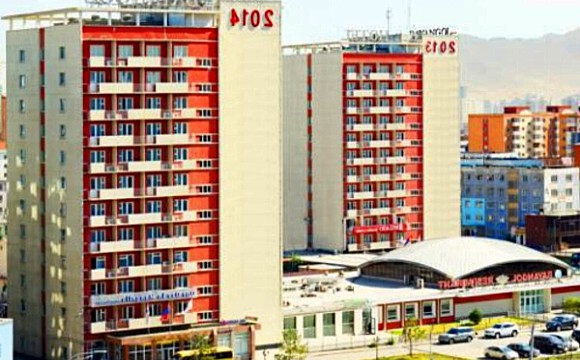
Bayangol Hotel, Ulanbaatar
Bayangol Hotel opened its doors since 1964 and it has always played a significant role in the Mongolian tourism and hospitality industry. Since its privatization 1991, it was the first privately owned and managed hotel in Mongolia. Our 4 star property has been the preferred lodging for royalty, as well as tourists and business guests.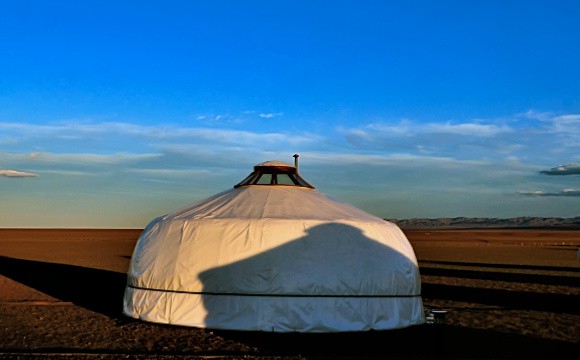
Ger Camp
Usually made out of lightweight felt tarp covering a wooden framework a Ger Camp is a simple accommodation yet cozy and comfortable. Ger camp is the traditional tent house suitable for nomadic life of Mongolians. Staying in a ger provides a window of opportunity to experience this unique way of life that will make a trip to Mongolia even richer.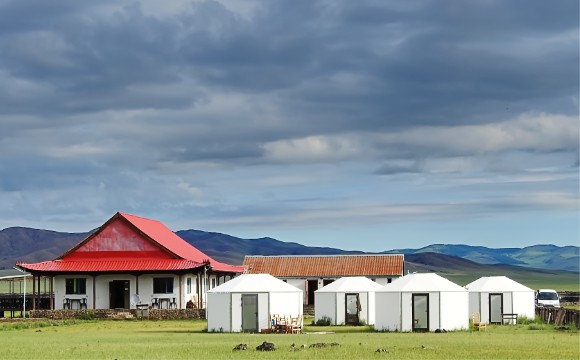
Talbiun Lodge
Talbiun Lodge provides two-bed accommodation in ordinary and luxury yurts, can accommodate 80-100 guests, and has 24-hr hot showers and toilets. The camp also includes a restaurant. Talbiun Lodge, which is connected to the central power grid, is located northeast of Uurtiin tokhoi and 410 kilometers from Ulaanbaatar.Giving back to the communities is our responsibility!
With every trip, you also support the SWAN and thus projects for Sustainable Community development and Biodiversity protection.
Our primary NGO partner is Social Welfare Association of Nepal (SWAN), with whom we have carried out multiple CSR (Corporate Social Responsibility) projects. Besides carrying out regular CSR activities in the areas of education and women empowerment, we have supported relief and rehabilitation initiatives in the aftermath of several natural disasters like earthquake, immediate response to COVID-19 pandemic across Nepal.
Giving something back to the world is a special and responsible affair of travel-to-nature Asia right from its inception. When you travel with travel-to-nature Asia and SWAN-Nepal, you become an integral force for change in addressing the most pressing social and wildlife conservation issues. Your tourism funds help transform the future of under-privileged and marginalized communities and transform the future of at-risk natural places you travel. Portion of our profit flows to local communities who live with and steward nature, creating jobs and improving livelihoods.
By joining one of our holidays you are playing a vital role in bringing positive changes in the lives of local community.




